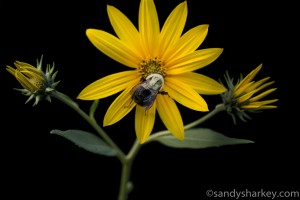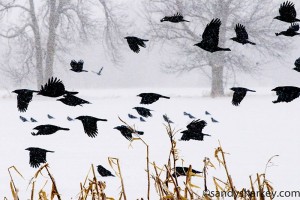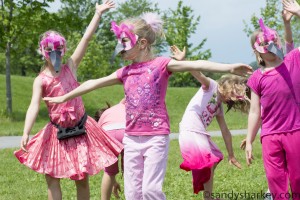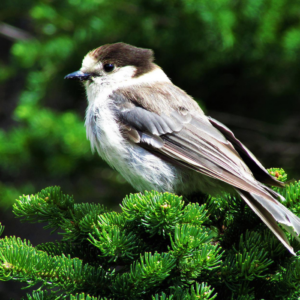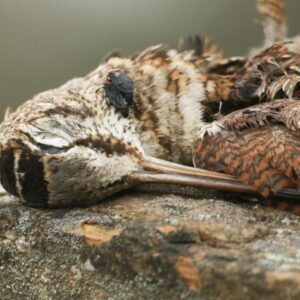Nature as our Playground
(The following is a guest blog from one of our newest Women for Nature, Sandy Sharkey who is a radio morning show announcer on Boom 99.7 by day and photographer and nature explorer by heart. Growing up, she spent countless hours catching frogs, saving baby birds, and poring over every page of the complete Funk and Wagnalls Wildlife Encyclopedia series… dreaming about seeing each and every one of the animals in those books. You can see more of her amazing photography and thoughts about how amazing nature is at her blog Cabin Road Art.)
I remember seeing the police car up the street but thought nothing of it, being six years old and quite content with the fact that I had just caught a bucket full of tiny spring frogs. I had no idea that the police car was in fact searching for me. Or that my family and most of the neighbours were also searching for me. Each day I would normally walk home from Grade 1 and be in my backyard by mid-afternoon. But this day was different, because my class-mate Stewart had told me that there were ‘tons of tiny frogs’ in the swamp behind his house, so naturally I had to investigate. I didn’t think twice about the fact that Stewart’s house was several blocks away, or that anyone would have an issue with my froggy adventure. Once I arrived at Stewart’s place and saw all those hopping frogs, I didn’t have a care in the world. The sun was hanging low in the sky when I finally stopped collecting frogs in a bucket and started to make my way back home. And right after I saw the police car, I saw my Dad. His face was filled with emotion and relief but I also got a stern ‘talking to’, and I was marched back home, where I watched in horror as my Dad took my bucket of tiny spring frogs and emptied all their wiggly bodies onto the grass behind our house. And as spring turned to summer, in the backyard of a red brick house on a very busy street in the suburbs, my tiny frogs grew into adulthood and croaked loudly each and every night. I thought that was fantastic.
Like all the kids in my neighbourhood, nature was not only the backdrop to our childhood, it was how how we spent our days. And we didn’t have to go far to find it. We knew where the garter snakes sunned themselves, which tree branches held the raucous crow nests, and we knew where the turtles would poke their heads through the bulrushes in the nearby swamp. I also grew to learn that I didn’t need buckets or jars or nets. It was much more enjoyable to find creatures in their natural habitat and if it was just for a glance or a fleeting moment, the sight of a butterfly hitching a ride on a breeze became much richer to me than staring at the hapless insect through an empty peanut butter jar.
My parents were like all the other parents on the street. They allowed us to treat nature as one giant playground. Sometimes I would run into my brother or sister by the creek or inside my favourite forest (which exists no more, it is a medical centre today) and we were all doing the same thing. Growing up, exploring, observing, playing, learning and whether we knew it or not, we were developing a very strong appreciation for nature. I knew what an American goldfinch was by the time I was 7 or 8, mostly because my Mom called these birds ‘wild canaries’ and I believed her until I got an armload of bird books for my birthday and looked up the actual name for the bird. My Mom still called them wild canaries.
Having a strong childhood connection to nature can lay the foundation for a lifetime of respect for our natural world. It is true that the world today is much different than it was for generations from the 60’s, 70’s, even the 80’s. Computer games and mobile devices challenge the number of hours in a day that a kid spends outside. Many urban developments take out every tree in a forest, eliminating the rich biodiversity that grew over hundreds of years. But things are getting better.
Nature Canada’s 45,000 members and supporters have a strong voice to effect change for nature conservation in both rural and urban communities.
Technology and nature don’t have to be mutually exclusive, and there are hundreds of mobile ‘apps’ that identify everything from bird sounds to the bright green moss at the foot of a tree. Digital cameras give children a wonderful view of the natural world. Strapping on a GoPro for a nature hike is exhilarating, healthy, and it feeds a passion for further adventure. Today, a neighbourhood forest. Tomorrow, a mountain top.
This past summer, I co-hosted Nature Canada’s ‘Bird Day in Ottawa’, a lively day with educational booths, a birds of prey demonstration, entertainment, and the unveiling of ‘The Official Bird of Ottawa’ (the chickadee). Local school children surprised us with their ‘Flamingo Dance’. It didn’t matter that we don’t have flamingos in Ottawa (except for a wayward Chilean flamingo dubbed ‘Elisha’ that mysteriously appeared by the Ottawa River in 1997). It was a beautiful day and there were hundreds of children giggling with enthusiasm and peppering the bird experts with questions.
Encouraging today’s children to connect with nature is the best way to ensure that nature is protected forever.
I am thrilled to be a member of Nature Canada’s ‘Women for Nature’ initiative. Let’s work together to ensure that nature continues to be the ultimate backdrop for children for generations to come.
Besides, nature is COOL. And we get to wear muddy boots.
[rev_slider sandyblog]



